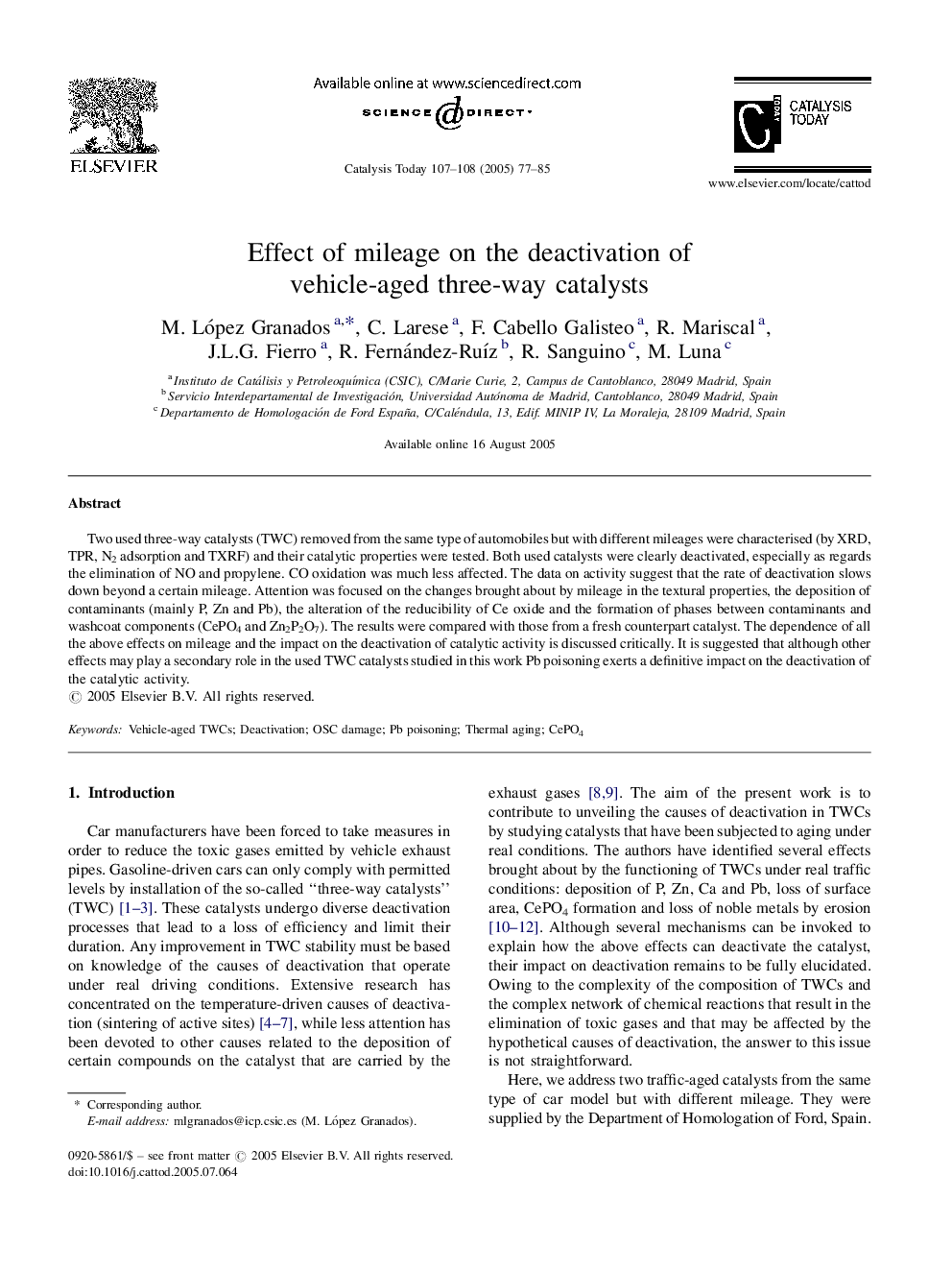| Article ID | Journal | Published Year | Pages | File Type |
|---|---|---|---|---|
| 9610169 | Catalysis Today | 2005 | 9 Pages |
Abstract
Two used three-way catalysts (TWC) removed from the same type of automobiles but with different mileages were characterised (by XRD, TPR, N2 adsorption and TXRF) and their catalytic properties were tested. Both used catalysts were clearly deactivated, especially as regards the elimination of NO and propylene. CO oxidation was much less affected. The data on activity suggest that the rate of deactivation slows down beyond a certain mileage. Attention was focused on the changes brought about by mileage in the textural properties, the deposition of contaminants (mainly P, Zn and Pb), the alteration of the reducibility of Ce oxide and the formation of phases between contaminants and washcoat components (CePO4 and Zn2P2O7). The results were compared with those from a fresh counterpart catalyst. The dependence of all the above effects on mileage and the impact on the deactivation of catalytic activity is discussed critically. It is suggested that although other effects may play a secondary role in the used TWC catalysts studied in this work Pb poisoning exerts a definitive impact on the deactivation of the catalytic activity.
Related Topics
Physical Sciences and Engineering
Chemical Engineering
Catalysis
Authors
M. López Granados, C. Larese, F. Cabello Galisteo, R. Mariscal, J.L.G. Fierro, R. Fernández-RuÃz, R. Sanguino, M. Luna,
